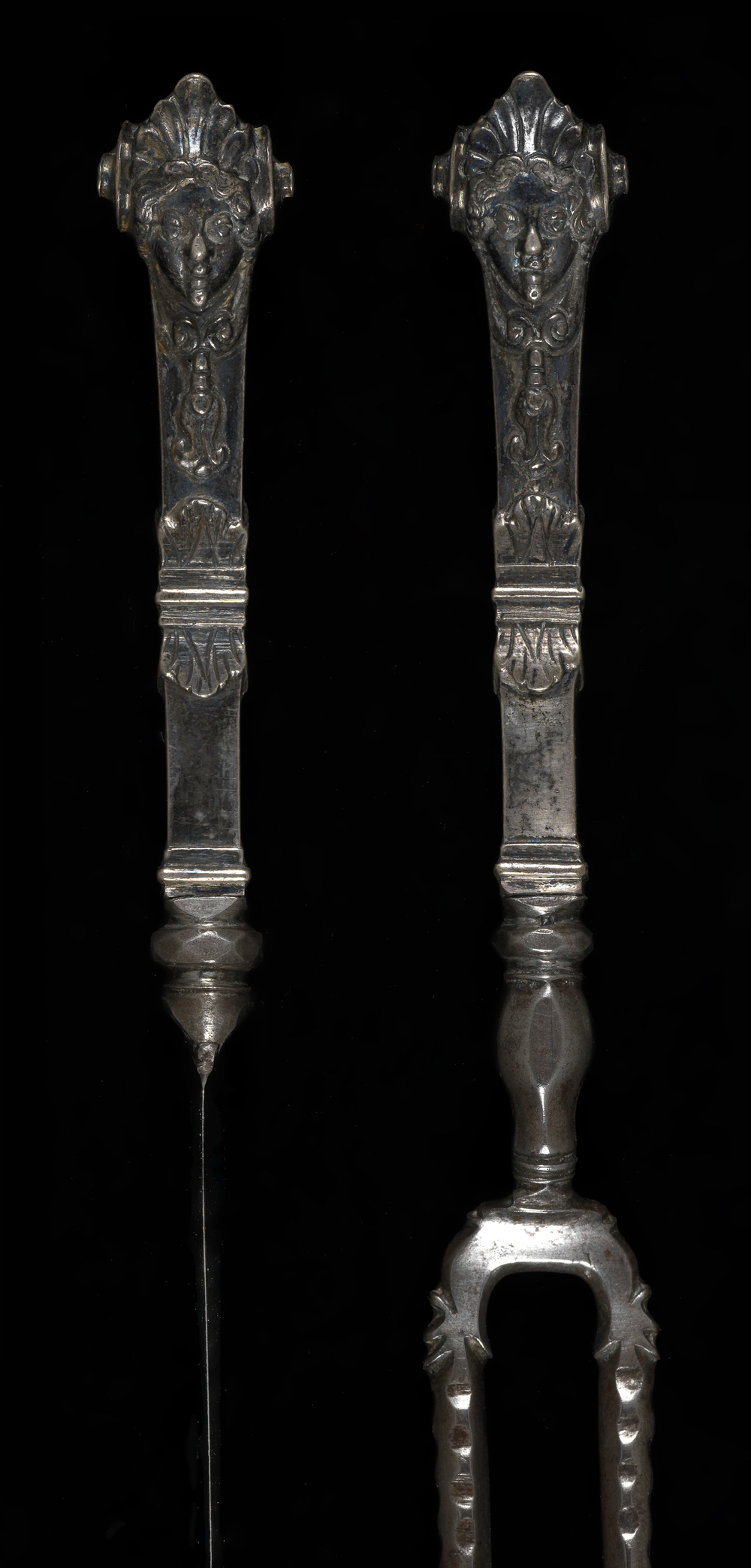
Carving in alto (aloft) was a spectacle enjoyed at elite tables. The highly skilled carver (trinciante in Italian) performed his sleight of hand by spearing the meat or fowl with the fork and slicing it cleanly with as few cuts as possible. This elegant carving set is similar to that illustrated in the Trincir-Buch (displayed nearby). The fork’s long, facetted, and notched steel tines would have been strong enough to hold a roasted fowl or joint aloft while the knife, with its lethally sharpened broad blade, made the cuts. The square-sectioned silver handles would have helped to ensure a firm grip for the carver as the meat juices dripped down.
Padua, Italy, 1700 – 50
Silver and steel
C.B. Marlay Bequest (MAR.M.140-A-B-1912)
